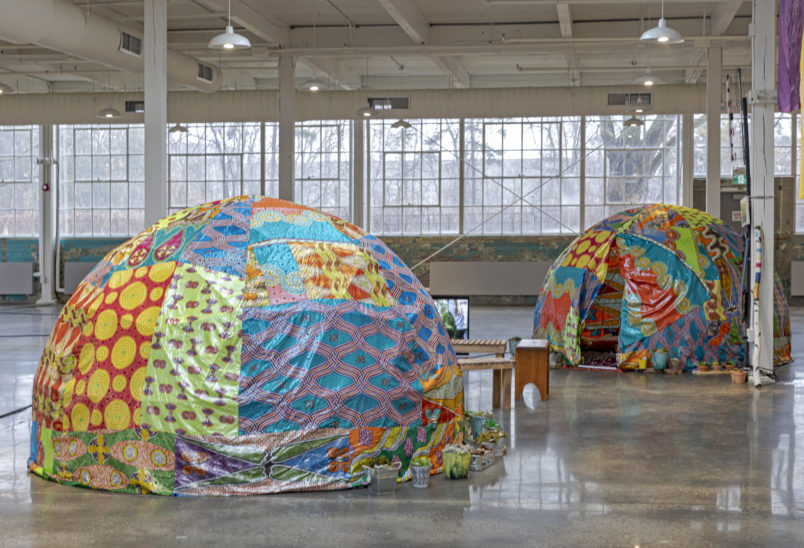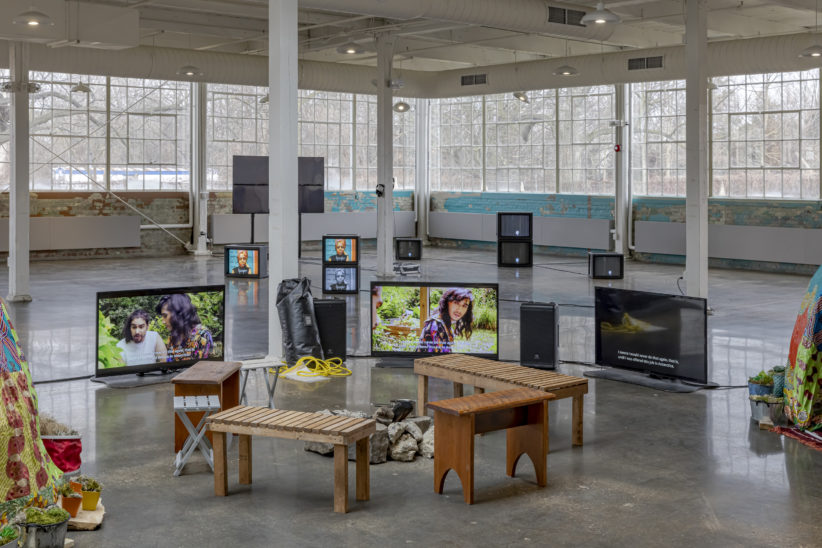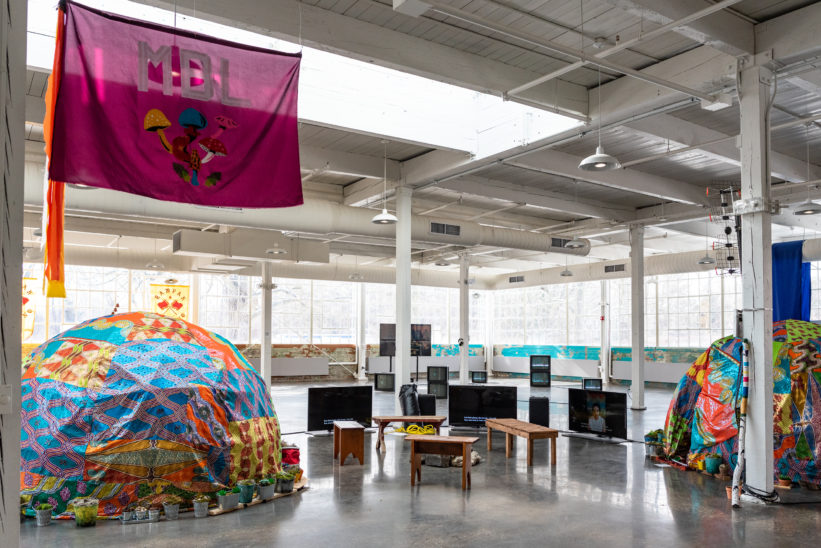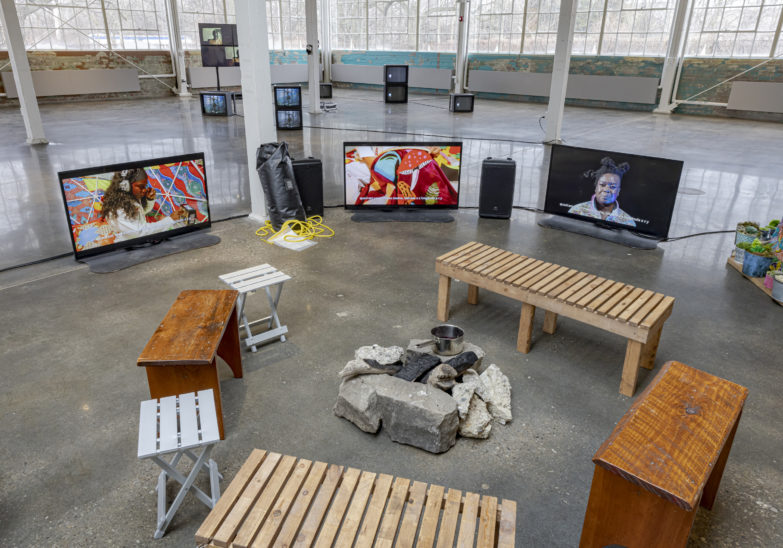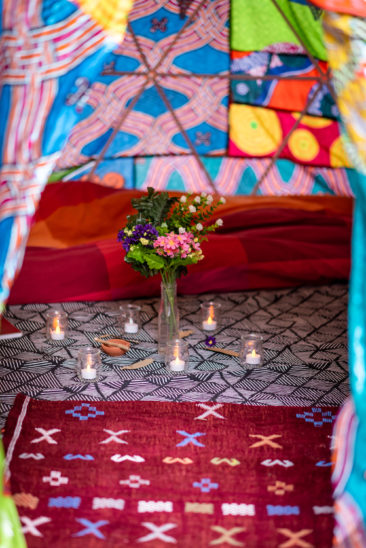In the 1960s, the Antarctic Treaty System (ATS) was established to regulate international relations with respect to the continent. The central treaty went into force in 1961 and was the first arms control agreement of the Cold War, limiting the continent of Antarctica’s use to scientific purposes and banning all military activity. To this day, seven of the fifty-four countries that are now party to the treaty still claim portions of Antarctica as their territory. None of these claims are currently recognized by the other nations. Antarctica is also the only continent without a known Indigenous human population. Since the ATS was established, eleven people have been born in Antarctica, of which ten were scientists sent by their respective governments for the express purpose of staking a future land claim.
This wild but true story is the starting point for Syrus Marcus Ware’s expansive, interdisciplinary, and multi-year project that predicts a near-future taking place between the years 2025 and 2027, wherein Antarctica has become the only habitable place on the planet. Colonial plans that had laid dormant for decades are initiated, and the people who were born on the continent are sent back to build colonial outposts and take over land.
For the 2019 Toronto Biennial, Syrus presented Antarctica (2019), an installation of soft sculptures, video, large drawings, and regular live performances that depicted the arrival of three Black, Indigenous, and POC Antarcticans and their struggle with “the Company.” An accompanying video titled Ancestors, Can You Read Us? (Dispatches from the Future) (2019) was presented on the New Media Wall at Ryerson Image Centre. The video, drawing on the shared language of speculative fiction and political activism, was a portal to the future’s future, connecting passersby with a group of survivors who had left the burgeoning colonies. In the video, it is the year 2030, and a new world is glimpsed where racialized people have ultimately survived the “black death spectacle” writ large on the nightly news, survived the catastrophic impact of the Anthropocene, and survived the crushing effects of white supremacy.
For the 2022 Biennial, Syrus presents MBL: Freedom (2022). The work is the next chapter of the saga, wherein the three Black, Indigenous, and POC Antarcticans flee the Company’s territories and abandon their mission to colonize Antarctica, swimming in icy waters toward the only part of the continent not claimed by a country, “Mary Bird Land,” or MBL. The three set out to create a territory for all activists and abolitionists to be free in. When they land on the shores of MBL, they make an unexpected discovery that changes their trajectory. The work, reflecting on climate change, white supremacy, abolition, and disability justice, will be presented as an interactive film experience, situating participants on a campsite in MBL. During the Biennial, the audience will be invited to participate in workshops about abolitionist futures, disability justice, and revolutionary struggle and can engage in a night of performance with actors Ravyn Wngz and Dainty Smith.
MBL: Freedom (2022) is commissioned by the Toronto Biennial of Art and made possible with the generous support of the Age of Union Alliance.
Audio Didactic:
Bio
Dr. Syrus Marcus Ware (born in 1977, Montreal, Canada; lives in Toronto, Canada) is a Vanier scholar, visual artist, activist, curator and educator. Syrus uses painting, installation and performance to explore social justice frameworks and Black activist culture. He has shown in galleries and festivals across Canada. Syrus is part of the Performance Disability Art Collective and a core team member of Black Lives Matter – Toronto. His ongoing curatorial work includes That’s So Gay (2016–21) and BlacknessYes!/Blockorama. Syrus is the co-editor of Until We Are Free: Reflections on Black Lives Matter in Canada (University of Regina Press, 2020).
Participated in the “Rabbit Hole: Pod Theory” Residency, 2020.
Exhibition Site
Small Arms Inspection Building
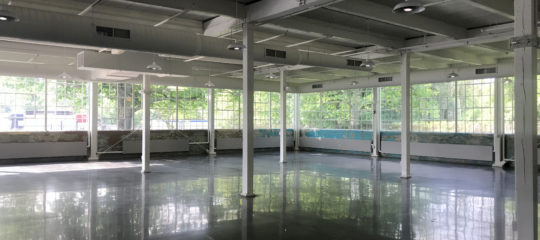
1352 Lakeshore Road East
Mississauga ON
L5E 1E9

